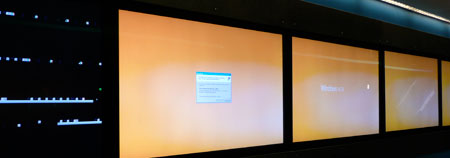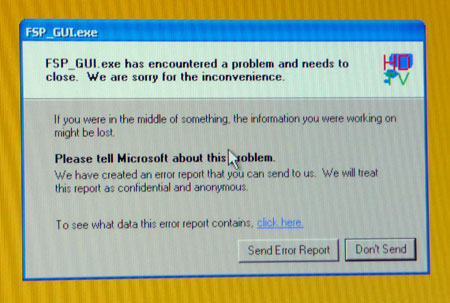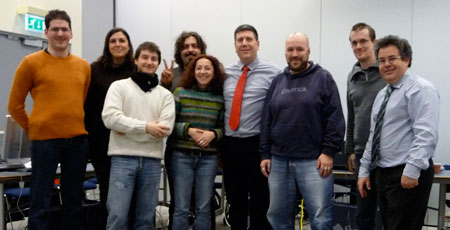Note: This post is even more navel gazing/philosophical than usual with little OpenNMS content.
Between running The OpenNMS Group and keeping my farm from falling apart I don’t have much free time. It is extremely rare that I can take a vacation, eat out with friends or family, or see a performance (although OpenNMS has grown enough in the last couple of years that I do get to take the occasional vacation – wasn’t always the case).
So it was quite the treat when I got to go out for a nice dinner last night as well as to see a lecture by Anthony Bourdain. I really like food, both eating it and preparing it, and Anthony Bourdain is one of my favorite “celebrity” chefs.
I went with a couple of friends of mine who I met 25 years ago at Harvey Mudd College (the first of several schools that eventually kicked me out). They have hectic careers coupled with two children, so going out for an evening like this was rare for them as well. The only problem we had was trying to figure out how to schedule dinner, since a meal with them usually lasts about four hours. The show started at 7:30pm, so for our normal routine we would have had to start dinner around 3:00pm. We decided to compromise at meet at 5:30pm, when the restaurant opened.
For those who don’t know Anthony Bourdain, he came to fame several years ago with the publication of the book Kitchen Confidential. It was pretty much an exposé of the high end restaurant business in New York City. He wrote it mainly aimed at people who worked in that industry but it caught the attention of foodies like myself. The thing I loved about this book is that he wasn’t afraid to talk about iconic restaurants such as The Rainbow Room. He’s blunt, opinionated but quite often right, and when he’s not he tends to apologize.
In my deepest conceit I’d love to be known as the Anthony Bourdain of Open Source. He has strong views on food and its preparation, and he isn’t afraid to criticize institutions like The Food Network, his one-time employer which used to be much more aligned with his ideals but over time became more about entertainment and money (such as the Sandra Lee episode where she opened a bag of pre-cut vegetables, dumped some Ranch dressing on it and called it haute cuisine).
I feel the same way about open source. Back before Red Hat went public the open source community was focused on creating great, new software with a strong interest in keeping that software 100% free and open. Once organizations started to make money around open source software suddenly everyone wanted on the bandwagon, even if their business model was still staunchly based on closed, commercial software. Through marketing dollars it seems that “open source” has come to mean “open core“. For those companies trying to make billions of dollars on software quickly, I agree with Coté that the only way to do that in today’s market is with the hybrid model where much of the revenue comes from closed software licenses.
But I bristle when that is called open source. Furthermore, I think the window for even the open core model is quickly closing. True open source software gets better every day, and for successful projects they will continue to become viable alternatives to paid software. Thus paid software margins will continue to decrease, making them less profitable and less attractive as acquisition targets. For those commercial and open core companies they’ll have to write more software to keep up, but since their revenue model is based on closed licenses this will require even more money for programmers and result in even lower margins.
Anthony Bourdain is not a fashionista when it comes to food. He is not a locavore nor a vegetarian, and he even had the gall (gasp) to question whether or not the organic food movement was a good thing. In much the same way, while I am big on individual rights, I’m not a hippie, a tree hugger or a kumbaya free software for everyone bigot. I consider myself a hard core capitalist, and I don’t run a charity.
The commercial software industry has created a number of extremely wealthy people because for the first time something could be created that literally has an almost zero distribution cost. Even the tulip bulb bubble required something to be created each time, whereas bits are pretty much free. For some reason people have come to believe that this is the way things should be, and this was amplified even more by the Internet bubble where just an idea could result in millions of dollars.
The downside is that people have forgotten that it is possible to make money simply by helping customers and having fun doing it. To go back to my food analogy, one of the tastiest things I had on my last trip to Italy consisted of a slice of freshly baked bread topped with fresh tomatoes, basil and olive oil. High quality ingredients prepared in a simple and straightforward manner. No fancy “paradigm shifts” or “clouds” – just healthy nourishment.
For some reason if you can’t have a billion dollars in revenue in five years Silicon Valley thinks you have no value. I would think in these economic times people would appreciate businesses that grow more organically. It’s all about the basics. For example, Dan Ariely had a post today quoting Gregory Clark, an economist at UC-Davis (ironically, the birthplace of Net-SNMP). He states:
The debate about the bank bailout, and the stimulus package, has all revolved around issues that are entirely at the level of Econ 1. What is the multiplier from government spending? Does government spending crowd out private spending? How quickly can you increase government spending? If you got a A in college in Econ 1 you are an expert in this debate: fully an equal of Summers and Geithner.
In much the same way, the vast majority of successful businesses are going to be based on the basics: make a good product that people want and sell it at a fair price while watching expenses. No magic and no marketing mumbo-jumbo. As straightforward as a nice bruschetta.
I want to end this rather rambling post to a reference to some recent research done by Ryan Howell at San Francisco State University. He discovered that, in the long run, experiences make people happier than possessions. I had a wonderful time last night, even though I usually feel guilty doing something that doesn’t involve either working on the business or working on the farm (and to the bozo in seat E 210 at the DPAC, turn off your fracking blackberry during the show – you ain’t that important). I’ll probably remember, fondly, that experience much more so than anything I’ve purchased in the last year.
Working on OpenNMS, if we measure wealth by positive experiences, makes me the richest man on the planet.


